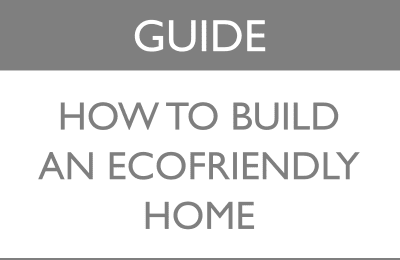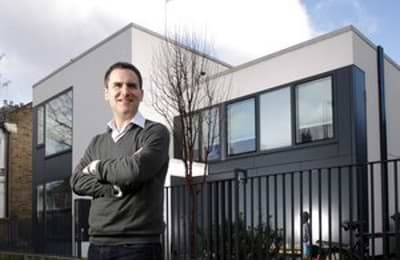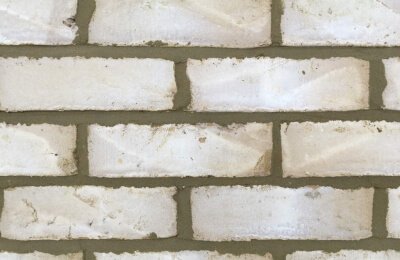Whether building new homes or modernising an existing one, making our homes more ecofriendly is high on everyone's agenda
With the recognition of the climate emergency, governments all around the world have to work hard to find ways to cut carbon emissions and keep below emissions targets.
Energy use in homes accounts for 14% of all UK emissions. 80% of the homes that will exist in 2050 (when we are due to have a zero carbon economy) already exist.

What can we do to make our homes more ecofriendly?
First, decrease our energy use.
We can do this by making our homes more energy efficient. In older homes, this means adding insulation in the loft or double glazing as a starting point. Victorian and other period homes were designed to leak air so that the smoky fires that heated them didn’t suffocate the occupiers.
Now that the vast majority of these homes have other forms of (cheaper and more efficient) heating, the key to energy efficiency is to keep that heat in. The less we have to heat, the less energy we have to use.
However, it’s important to note the old adage: “build tight, ventilate right”. As people plug up the holes in the fabric of their homes, if they are not ventilating them as well, condensation will build up which will lead to mould growth.
What about new build homes?
New build homes are built to a strict set of building regulations – which means that 8 out of 10 new build homes are A or B rating for energy efficiency rather than 2.2% of existing properties. This is due in part to new builds being much more airtight and with much higher levels of insulation.

It has also been shown that when home owners have a say in how their homes are built, they tend to make them more energy efficient, which means that custom build homes should on average be more energy efficient than regular new builds.
Before we talk about how we can build our homes to be more ecofriendly, let’s touch on two of the measures that we use to help determine how energy efficient a home is, airtightness and insulation.
What is airtightness?
Typically, we aim for an airtightness of less than 3*. This is about 4-5 times better than a Victorian home. It is measured as the amount of air lost through the fabric of the building per hour at a standard pressure.

What does this mean in practice? Well – imagine that you went on holiday and left your home to get cold. You then heated it up to a comfortable temperature (say to 20 degrees). You then turned the heating off.
- the Victorian home would be cold again within 90 minutes (airtightness of about 12-13)
- An average new build home from about 5 years ago would be cold again within two hours (airtightness of about 10)
- The average new build home of today would be cold again within four hours (airtightness of about 5)
- Our homes would be cold again within about eight hours (airtightness of about 2.5)
What is insulation?
Everything is insulating to some degree – but of course, some things are better at insulating than other things. The measurement used is either a U-value or an R-value. This measures how much heat passes through 1 square metre of the substance. Most Victorian homes are built using single course brick walls, which has a typical U-value of around 2** . When we add approximately 10-15cm of insulation boards to our walls, we achieve U-values in the region of 0.2 – so 10 times better than a Victorian house!

Depending on when your property was built, even more modern builds will have walls of varying u value based on the type of wall that is installed. In the 1930’s, unfilled walls (no insulation) were common, and then after 1996, because of stricter regulation, walls had to be filled, which increased heat retention.
Between 1983 and 1995, unfilled cavity walls had a u value of 0.6, and from 2010 onwards, unfilled walls had a U-value of 0.2.
Typical single glazed windows in a Victorian property have a U-value of about 5.4. This compares to a double glazed window of about 2. Our triple glazed windows have a U-value in the range of 0.84 – 1.17 (W/m2K).
If you want to figure out how much money this will actually save you, replacing single glazed windows with triple glazed windows if you do the calculation will reduce your heating bill by about £7 a year. This may not sound like very much, but when you consider that these windows will also help dampen noise considerably, as well as prevent condensation and therefore mould growing in your house because of the temperature near the window will be much higher, they are well worth the investment!
Windows are also only one part of the whole structure of the house, so paying attention to U-values for all the other materials like outside cladding and insulation will make sure that everything works together to make your home energy efficient by retaining as much heat as you can.
What about bills?
If you lived in a mid-terrace Victorian property, you would (on average) spend about £1,430 a year on energy. This drops by almost 50% to £793 in a new build terrace property. That may not seem like a lot, but with fuel prices likely to go up each year and given low interest rates in the bank – this is the equivalent of a saving of about £30,000*** in capital costs.
What about the materials and systems that you can install in your home to make it as environmentally friendly as possible?
Solar
With the price of solar panels (or solar photovoltaics/solar PV) steadily decreasing, solar energy is becoming a viable option for more and more households, either in the form of solar panels on the roof, or solar tiles which replace roof tiles.

While the amount of energy generated varies depending on the time of year and the area of the country, energy can still be produced on cloudy days, saving up to 1.3 to 1.6 tonnes of carbon per year in a typical home.
When the solar system in the home generates more energy than the household can use, the energy can also be exported to the grid, with the possibility of being paid back via an export payment.
The sun can also simply heat your hot water. This is known as ‘solar thermal’. In the summer months, you can pretty much turn off your boiler completely, and in spring and autumn, it ‘pre-warms’ the water so that you don’t need as much gas or electricity to warm it fully.
Heat recovery systems
In addition to installing proper insulation in a home, heat recovery systems help to further bring down energy usage and costs by making use of the heat that is already in the home instead of losing it to the environment.
Instead of the warm air that’s already in your home being expelled into the atmosphere, the air is recycled by a ventilation system which draws heat from the outgoing air to warm up the air that is entering. This reduces the amount of energy used by the boilers and radiators in the house, which would normally need to work to warm up the new cold air that is coming in.
In fact, there are heat recovery systems on the market now that claim to extract up to 90% of the heat from outgoing air!
Heat pumps
Heat pumps are another way to use the heat that is already existing to heat your home, reducing energy usage and costs. While they do require electricity to work, they are relatively low maintenance, reliable, and are still considered renewable energy because the heat that is circulated is generated first by the sun.

There are two types of heat pumps, ones that use the warmth coming from the ground to heat your home which then gets circulated around the house, and air source heat pumps which extract the warmth from the air outside, which are suitable for a wider range of properties.
With an air-to-water heat pump, the system heats water which can then in turn provide heat via underfloor heating or radiators. Air-to-air pumps on the other hand circulate warm air around homes via fans and cannot be used to heat water.
Greywater Recycling
Greywater is the water that we use in our household coming from showers, sinks, washing machines and dishwashers that is no longer safe to drink, but can be treated to use to flush toilets, wash clothes, and water plants.

Up to 50-80% of a household’s wastewater is greywater, and if it gets recycled in a direct use, biological, or mechanical system up to 70 litres of water can be saved per person in a household can be saved a day, helping us save water and be environmentally friendly, but also lowering your water bills in the process.
Environmentally friendly materials
What you fit out your home with can be just as important as the system that you install in it. With flooring, for example, you can choose from many eco-friendly materials.
Materials like cork, bamboo, hemp, (or even the much maligned linoleum!) are sustainable because they are easily renewable, can be recycled, and in some cases even reused.

If you are looking to add more insulation to your home, wood, cork, and hemp, or even wool are all good options as natural materials that will keep your home nice and cozy.
In addition to the materials that you clad your floors and walls with, make sure that the appliances you choose for your new home are energy efficient. Make sure to check the energy ratings label for the appliances you are buying, and when your appliances have come to the end of their lives, look at whether they can be recycled. Many retail outlets such as Currys will also take away your old appliance to be recycled when they deliver your new one.
What do you do to make your home more eco-friendly? Leave us a comment below!
* the current units are m3/(m2·h) @50 Pa which is amount of air changes that happen when you pressurise the house at 50 pascals.
** W/m²K
*** Taking £793 and adding 1.5% inflation for 30 years
We’re always striving to make our homes as sustainable as we can!
See the projects that we’re currently building by clicking below
New to Unboxed Homes?
We make self-build easy. We build customisable eco friendly new homes that you fit out yourself, or we fit out for you.
If you’ve ever wanted to build your own home but have been daunted by the idea or you want a project but don’t want the risk of buying a Victorian terrace that needs modernising, then sign up for our newsletter or our custom build register and we will send you emails with opportunities and land for sale that has been vetted as a good opportunity by our MD Gus Zogolovitch
Be the first to know about our newest projects
Find a plot for your custom build project



